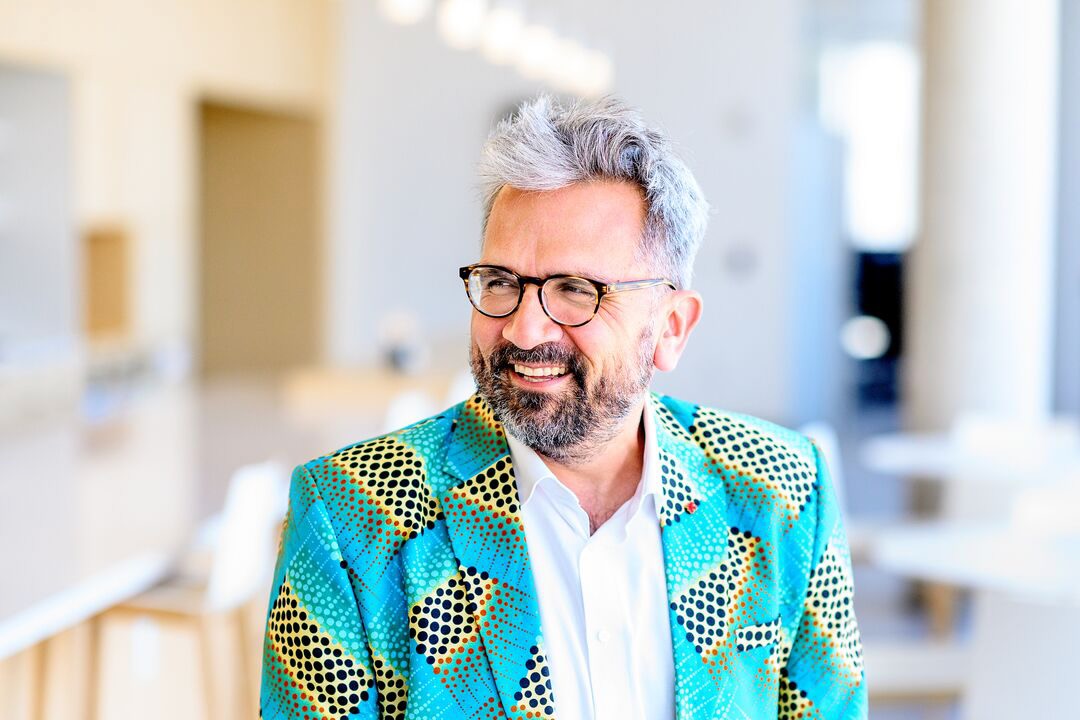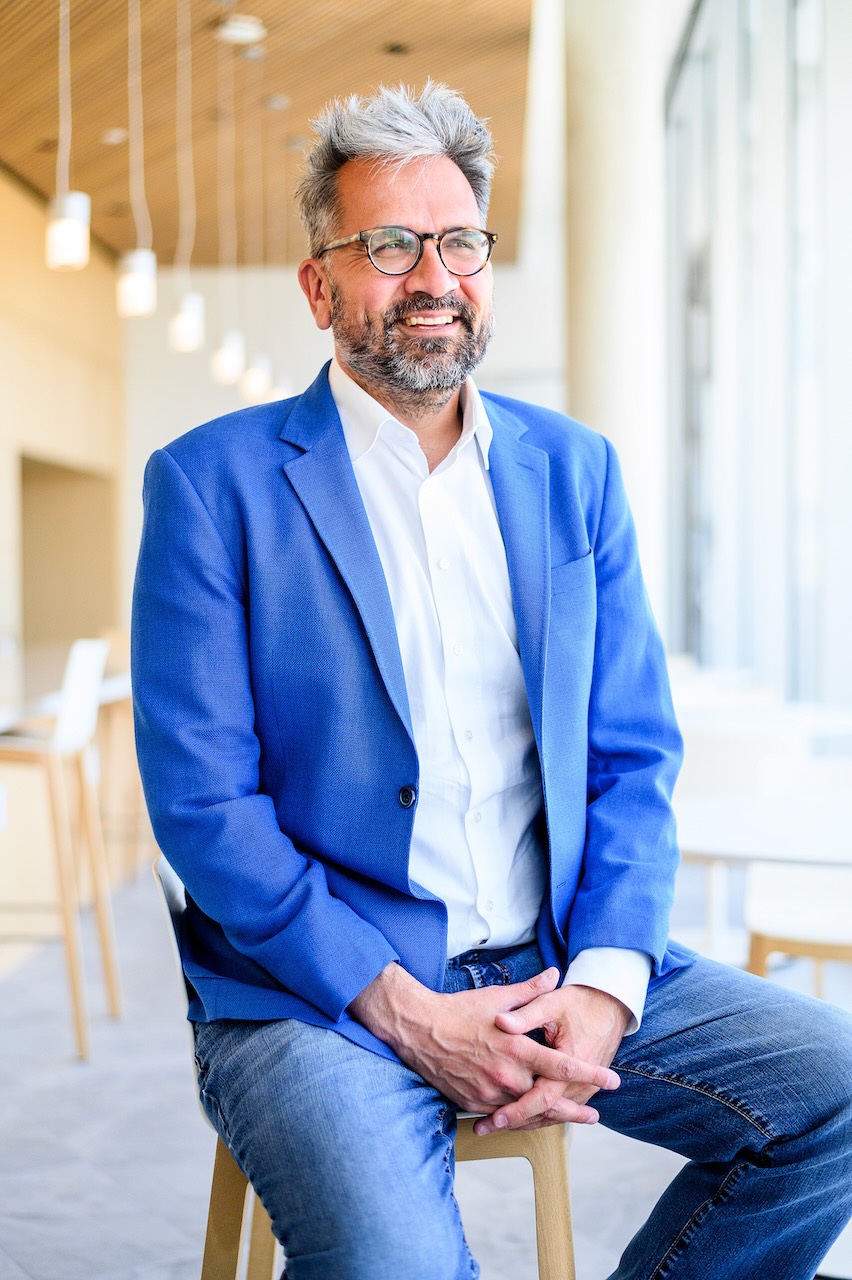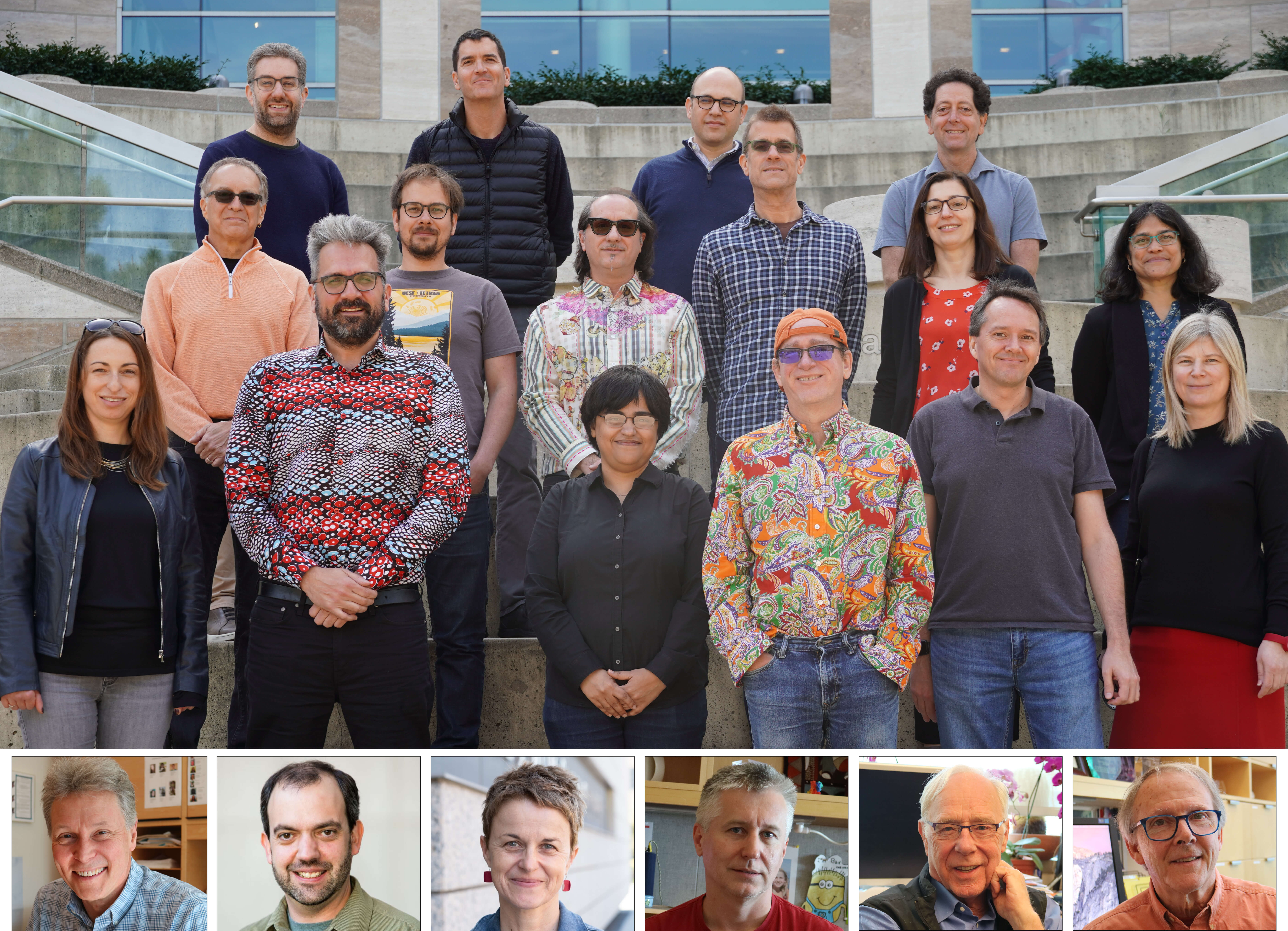Nevan Krogan, PhD, is the director of the Quantitative Biosciences Institute (QBI) and professor of Cellular Molecular Pharmacology at UCSF.
First, please tell us a little about yourself.

I'm Canadian, and I earned my degrees from the University of Regina in Saskatchewan and my doctorate degree from the University of Toronto. After my PhD, I moved to UCSF as a Sandler fellow in 2006. Later in 2006 I became a faculty member, and then became director of the Quantitative Biosciences Institute (QBI) upon its inception in March 2016. I've been director of QBI since then.
The big focus is on connections – connecting technologies, connecting different disease areas, and connecting people, not just at UCSF, not just in the United States, but around the world. Not just between scientists, but between scientists and non-scientists.
When you became faculty, were you put under pharmacy or a different school?
I am a faculty member in Cellular Molecular Pharmacology (CMP) at the School of Medicine. QBI is within the School of Pharmacy and that’s been great.
In the QBI Coronavirus Research Group (QCRG), you built a transdisciplinary, multi-lab, multi-institutional, multi-national, multi-sector open-science consortium in which over a thousand trainees and senior investigators worked together—in short, overcoming virtually every barrier that your colleague and AAAS president Keith Yamamoto says fragments science and the science community. To date, QCRG has published over 50 papers, distributed resources unconditionally to hundreds of labs world-wide, and placed over two dozen potential Covid therapeutic candidates into clinical trials. You have been quoted expressing surprise at how well the different disciplines worked together.
Are there enduring lessons learned from QCRG that could integrate our research enterprise?
Yes, I can give background on all of that. Before the pandemic QBI was really focused on facilitating collaboration. We had set a really strong foundation with our worldwide collaborative network. When the pandemic hit, we could just pick up the phone and get moving quickly.
We could see how fast science can move when we didn't really care about the reward structure. Everybody just collaborated.
The problem with academic research is that it's very siloed. A major reason, if not the strongest contributing reason to the silo-ization is the reward system. One person gets a grant, one person gets an award, one person gets tenure. The structure discourages collaboration. This is particularly pertinent for young scientists that come in. They have new technologies and ideas, and they see the system and think, “I need to be guarded. I can't share, right?” People ask them, “Why are there so many people on your papers?” Someone comes up for tenure and gets questioned, “What did this person do in this large collaborative effort?” Many senior faculty recommend that they do not collaborate, which is ridiculous.
When the pandemic hit, all of that went out the window.
We could see how fast science can move when we didn't really care about the reward structure. Everybody just collaborated. This was a disease we knew nothing about. Within a couple of years, we had vaccines and potential drug candidates. That's unheard of in biomedical research, drug development, and treatment development. Now as the dust settles on the pandemic, what can we learn? How can we implement this spirit as we study all diseases? Breast cancer, heart disease, Parkinson's, Alzheimer's.
We are not going back to the old way of doing science, which is incredibly cumbersome and slow with a reward system that discourages collaboration. We're trying to highlight what happened here. Let's keep this spirit and infrastructure in place as we battle all these other disease areas.
 You have this foundation – it's a model now. Are people picking it up around the world, is it being adopted?
You have this foundation – it's a model now. Are people picking it up around the world, is it being adopted?
The pandemic was a horrible tragedy, for sure, but there were a number of silver linings. One of the silver linings is we could showcase how we think science should be done. I think it was incredibly successful. There are entities around the world that are following it. What resonates most with our young scientists when we talk about this stuff is they say, “I think the system's broken, look at this.” I couldn't agree more. The younger people want to see change, they want to have collaboration, they see the funding structures, and they see the archaic, academic hierarchy, which makes no sense. The younger scientists say, “We want to do what you're saying. The challenge is how do we do it?”
For us, it's leading by example, collaborating with groups around the world, showing how science can be done, going around and preaching the word. Showing how it's not a zero-sum game. It's not one small pie. If we all work together, the pie gets bigger, and everybody gets more. Things are going back to the way they were but a big motivation and focus for us is to try to keep those lessons at the forefront of everybody's mind as we go battle in other disease areas.
During COVID could you bypass some safety regulations? With testing on humans or anything like that?
There were no ethical rules broken. There was nobody at risk with respect to how the research was being done. As an example, we're the first group in the world to clone out all 29 SARS‑CoV‑2 genes. We simply tweeted out “we got these clones and we're happy to send them to whoever wants them, please feel free to distribute!” No MTAs (Material Transfer Agreements), which slow everything down.
We were able to distribute those DNAs, those clones, to over 400 labs in over 40 countries in a couple of weeks, which helped expedite research on SARS‑CoV‑2 and COVID. Ignore those bureaucratic rules that don't make any sense and slow science down. Those are the kinds of rules we broke, and I try to continue to break - not by breaking ethical rules, not safety rules, but bureaucratic rules which we’re mired in daily.
Much of your collaborative work aligns with the principles of precision medicine, integrating basic and clinical research and patient care using quantitative approaches and computational tools to define disease mechanisms and personalize the treatments of individual patients.
Is UCSF advancing institutionally toward achieving precision medicine, and what is the value and significance of that goal?
One major silo that exists, not just at UCSF, but across all biomedical research and medical treatment is this bridge between basic discovery research and the clinical world. At UCSF, we and many others are actively trying to break down that barrier. I think we're doing as good a job as any in that realm. It's about really trying to translate the science into drugs or translate the science into helping people. It's a huge barrier, but I think we're in a great position to break that barrier down and show the world how that can be done.
I do believe AI is going to be playing a major role in breaking down that barrier. AI is having a role at different levels, in my [research] world, and in the clinical world. There's a lot of AI talk that doesn't make any sense, but I think when we have the right data in the clinical world, and in the discovery research world, we will be able to connect those worlds more accurately through AI. I believe that at UCSF and in the Bay Area, we’re really at the forefront of that. We could and should be leaders in these areas.
Going forward, are there any themes, any new projects you want to highlight?
To me the heart of UCSF is not just great scientists, but great people. That's why you can really push on changing things and doing creative and innovative activities.
One major direction we're going in is the neuropsychiatric space – a collaboration with QBI and the Department of Psychiatry, and the chair of its department, Matthew State. Excitingly, there are now sets of genes connected to different neuropsychiatric disorders, including autism, schizophrenia, obsessive-compulsive disorder (OCD), and anxiety disorder. We know nothing about these. We don't we have treatments or have only very barbaric ones. Excitingly, there are sets of genes that through large-scale exome sequencing studies that have now been linked to these different disorders. We now have the quantitative tools, both experimental and computational, to study these genes and get deep mechanistic insights about what they're doing in healthy cells and in the presence of the different mutations. It is revealing with respect to new therapeutic directions. In terms of moving the needle in the neuropsychiatric space, we're perfectly positioned and have an amazing partner in Matthew State.
We’re using the same tools that we use to study SARS‑CoV‑2 and COVID; the same tools that we use to study cancer, heart disease, or Parkinson's. We're now just focusing this toolkit or pipeline on neuropsychiatric disorders.
How did this project get initiated?
Chancellor Sam Hawgood recruited Matthew State. I remember our first meeting and Matt describes it as chocolate and peanut butter coming together. It was perfect. Matt is so passionate and dedicated to understanding and treating autism, especially in children. We have the tools that are disease agnostic that we can unleash on any disease area. It's just a perfect marriage.
When I choose which area to go into now, it's all about the people. Then it's so much more fun. There are so many interesting and important problems to work on; you’ve got to have fun working with people. I knew nothing about autism, one could argue I still know nothing about autism, but I have a great partner, Matt, who knows a lot about it. That was a relationship that was forged by Sam Hawgood about nine years ago.

It's the Bay Area - we like to disrupt everything…
The Bay Area is entrepreneurial, for sure, in terms of being disruptive. For me personally, I really got to work with all those scientists like Kevan Shokat, Andrej Sali, Brian Shoichet, James Fraser,Tanja Kortemme, David Agard - the list goes on and on. I'm only as good as those people and that means I'm pretty good. At UCSF, I think of a group of 15-20 people and obviously throw Keith Yamamoto in that mix of amazing scientists and innovative thinkers.
To me the heart of UCSF is not just great scientists, but great people. That's why you can really push on changing things and doing creative and innovative activities.
